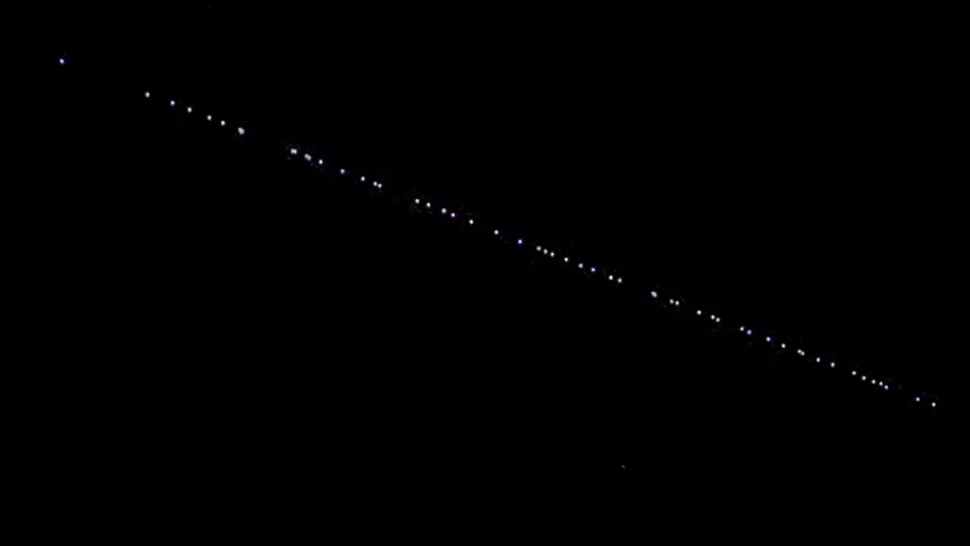
Starlink satellites have been forced to maneuver over 50,000 times to avoid potential orbital collision since the constellation’s first satellite launch. (Image credit: Arda Kucukkaya/Anadolu Agency via Getty Images)
Published by PC Magazine, 1 July 2025
The company deorbited about 2.6 satellites per day between December and May, causing them to burn up in the atmosphere. It’s unclear how or if this might impact the environment.
Over a six-month stretch, hundreds of Starlink satellites met a fiery end in the Earth’s atmosphere as SpaceX retired its aging hardware.
From December to May, SpaceX deorbited 472 Starlink satellites, according to a new filing with the Federal Communications Commission. The means the company deorbited about 2.6 satellites per day, a notable increase after having only deorbited 73 satellites in the previous six-month period.
SpaceX’s satellites are designed to orbit the Earth for five years before they’re retired and burn up in the Earth’s atmosphere. In the FCC filing, SpaceX said 430 of the deorbited satellites belonged to the first-generation Starlink network. However, most of the satellites that reentered the atmosphere did so less than five years after beginning operations.
The remaining deorbited satellites belonged to the second-generation Starlink network. SpaceX didn’t immediately respond to a request for comment, making it unclear why so many satellites were sent plunging back to the Earth. However, the Starlink network has grown to nearly 8,000 satellites, according to astronomer Jonathan McDowell, who tracks satellite launches.

In January, McDowell noticed the drastic spike in Starlink deorbits, and estimated the company was “retiring and incinerating about 4 or 5 Starlinks every day.” Since then, the number of Starlink satellites burning up the atmosphere has declined, he told PCMag, although his stats show another 200 satellites are facing disposal.
The large number of Starlink disposals raises questions about the potential impact. While Starlink satellites are designed to disintegrate as they burn up in the atmosphere, SpaceX in February revealed that small and mainly harmless debris fragments can continue flying toward Earth. In rare instances, they slip through, like the “2.5 kg piece of aluminum” from a Starlink satellite that fell near a farm in Canada.
Still, the company says the chance of its newest Starlink satellites causing human harm through falling debris is “less than 1 in 100 million” due to improved designs and ongoing changes to make the hardware fully disintegrate during reentry. Nevertheless, astronomers and scientists have been concerned about the same Starlink satellites releasing chemicals in the atmosphere as they burn up, which might have unforeseen climate or ozone layer impacts.
In response, a group of astronomers last year called on the FCC to pause Starlink launches until the environmental effects of large satellite constellations can be fully investigated. So far, the new Republican-led FCC hasn’t said if it’ll embark on such a study. Meanwhile, SpaceX has previously said it designed the Starlink network to minimize any environmental impact.
See: Original Article





